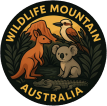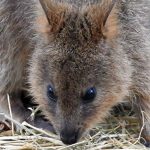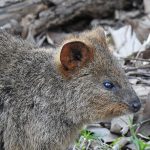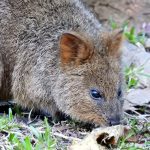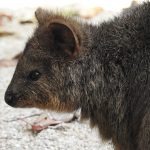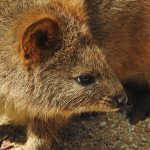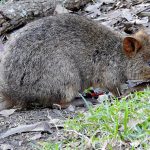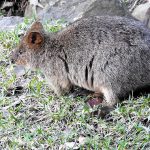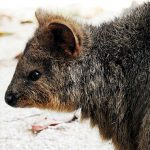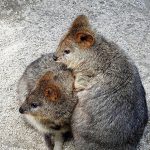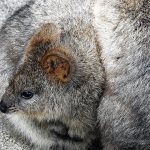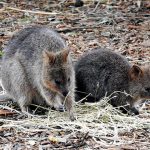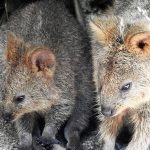The Quokka: The Curious Marsupial of Western Australia
The quokka is a small marsupial, instantly recognisable by its round face and signature “smile.” These enchanting creatures are found only in Western Australia, with strongholds on Rottnest Island, Bald Island, and scattered pockets of the mainland. Come and discover what makes the quokka so remarkable.
Quokka Quick Facts
| Feature | Detail |
|---|---|
| Scientific Name | Setonix brachyurus |
| Size | 40–54 cm body length; 2.5–5 kg |
| Lifespan | Up to 10 years in the wild |
| Diet | Herbivorous: grasses, leaves, bark, fruit |
| Status | Vulnerable |
| Most Famous Location | Rottnest Island |
Habitat and Range
Quokkas are incredibly adaptable. Their habitats stretch across:
- Coastal heathlands — where the air smells fresh with salt and flowering native plants.
- Swamps — with damp earth underfoot and the gentle buzz of insects.
- Forests — cool and shaded, with the rich scent of eucalyptus filling the air.
While once more widespread on the mainland, today their populations are mostly confined to select areas. The dense vegetation provides shelter and safety, but you may spot a quokka venturing into open fields at dusk, their fur glowing softly in the late sunlight.
Behaviour and Personality
- Always Appearing to Smile: Quokkas owe their reputation as the “happiest animal on Earth” to their upturned mouths and curious eyes.
- Friendly and Curious: Quokkas are unusually bold, often approaching humans, especially on Rottnest Island.
- Nocturnal Nature: Most active at night, they move quietly through the undergrowth, but in places with fewer people, you might see them at any hour.
- Silent Communicators: Instead of loud calls, quokkas rely on gentle grunts and clicks to interact with one another, blending into their environment.
Diet and Adaptations
Quokkas feed primarily on:
- Native grasses
- Leaves and stems
- Fruit, seeds, bark (when available)
Remarkable Adaptation
One of their extraordinary survival skills is the ability to extract moisture from their food. This means quokkas rarely need to drink water—an essential adaptation for surviving in Western Australia’s dry climate.
Conservation Status
- Vulnerable: Quokkas face ongoing threats including:
Despite these challenges, places like Rottnest Island, which is free from predators and rich in resources, have become havens for quokka populations, with current estimates of around 10,000 individuals thriving there.
Fascinating Quokka Facts
- First European ‘Discovery’: The name “Rottnest” comes from Dutch explorers in 1696, who mistook quokkas for giant rats, naming the island “Rattennest” (rat’s nest).
- Family Ties: Quokkas are a type of
macropod, meaning “big foot,” like kangaroos and wallabies. - Tail Tale: Their short, almost hairless tails are used for balance—not as a prehensile tool.
- Expert Swimmers: Quokkas can swim, allowing them to escape danger or search for new territories, especially on islands.
Conservation Message
Quokkas have come to symbolise the delicate balance of Australia’s unique ecosystems. By protecting their habitats, controlling introduced predators, and preventing habitat destruction, we can ensure that future generations marvel at their friendly faces and engaging behaviours. Every effort—from supporting local land care to responsible tourism—can help safeguard the future of this remarkable marsupial.
The story of the quokka is a reminder of both nature’s resilience and its fragility. Whether exploring the leafy darkness of a forest or basking on a sunlit island day, these endearing animals invite us to connect, learn, and act in support of our wild places. Next time you see a photo of a smiling quokka, remember: behind that cheerful expression is a story of survival, adaptation, and hope for conservation.
